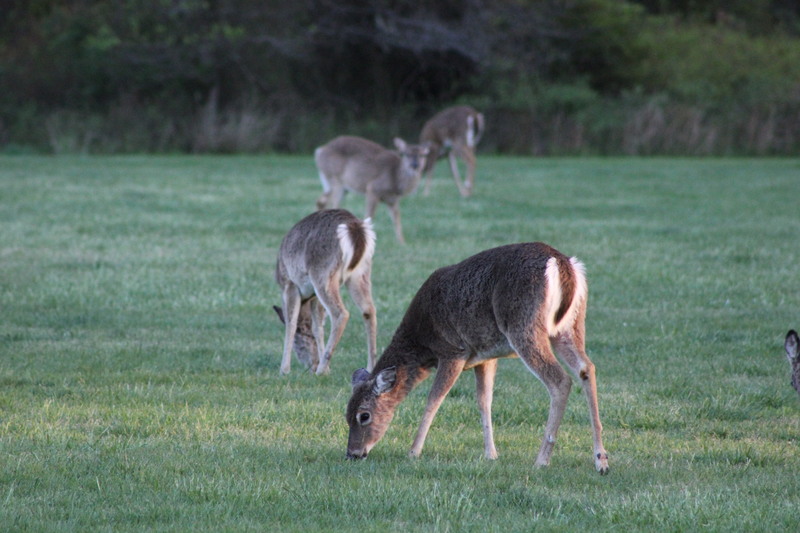This is the time of year when the wildlife of Sussex County slips out of the background and becomes more visible. Squirrel nests and their scurrying occupants stand out in bare branches, deer feeding up against winter flip their white tails with alarm when they flee from bean fields into the woods, and overhead our skies take on the interest of migrating waterfowl.
What a treasure is our wildlife. Both visually and for our bellies.
State officials estimate that hunters have taken almost 11,000 whitetail deer since the deer-hunting seasons opened Sept. 1. Joe Rogerson, a certified wildlife biologist with Delaware’s Division of Fish and Wildlife, said this week that preliminary results show 6,271 were taken during the shotgun season in late November. Delaware hunters take more deer by far with shotgun than with bows, crossbows, muzzleloaders and handguns combined, which account for the remainder of the annual harvest.
“That’s the eighth-highest harvest for that particular season in Delaware’s history,” said Rogerson. “The last time I examined the deer harvest numbers was on Nov. 25. On that day, 10,797 deer had been harvested and registered thus far, which was 28 more than were harvested on this same date last season. The 2014-15 season was the fourth-highest recorded harvest in Delaware’s history, so with harvest numbers tracking very similarly so far this season, the overall harvest is trending toward another bountiful harvest.”
The total deer harvests for both the 2013 and 2014 seasons ended in the range of 14,250. Rogerson said by rough estimate, the total deer population in Delaware stood at about the mid-40,000s before this year’s season began. “We do not set preseason harvest goals or objectives, but instead monitor harvest over several years and potentially make adjustments if/when necessary.”
Warm weather, slow migration
As for the skies, the numbers of geese and ducks we’re seeing is lower than usual this year for at least two reasons. Matt DiBona, another wildlife biologist with Fish and Wildlife who flies waterfowl counts each month from October through February, said migrating ducks and geese haven’t been pushed down our way this year by cold weather. “A lot of pintail and some teal have already moved through, but it didn’t seem like we had all that many. We do have some good numbers of black ducks around with some mallards. I expect numbers of mallards and black ducks to increase as winter moves in. I think most birds are still holding north, and we need some colder weather to force them south. Anecdotally, I’ll share that some of the biologists in other Northeast states have reported a slow start to their waterfowl seasons as well. I think we are probably seeing the results of the combination of warm weather and poor production year. But with two months left, I think we’ll see things improve.
“In terms of Canada Geese,” said DiBona, “we have some birds around but are still waiting for big numbers of geese to arrive. If recent patterns hold true, it could be January before our goose season really kicks in.”
DiBona said he heard there was bad weather during this year’s breeding season way up north which hampered nesting success. “During preseason banding operations, biologists were seeing a higher ratio of adult:juvenile birds than would be expected during a good production year. Not saying it was a bust, just below average.”
A final note on coyotes
A friend shot and killed a coyote recently while deer hunting with a crossbow. All perfectly legal. The season is open on coyotes, which have extended their natural habitat into Delaware during the last several years.
A few years back Delaware’s legislators - in response to reports that coyote numbers were rising rapidly, threatening baby deer, dogs and cats - hustled to pass legislation allowing hunting and setting seasons. Delaware now allows them to be hunted. All that are taken must be registered with the state.
Joanna Wilson, public relations officer with Fish and Wildlife, said so far in 2015, three coyote kills have been registered. In a recent press release sent out by Wilson, she wrote: “With proper management through state regulations, coyotes are not expected to adversely affect populations of most wildlife species, including Delaware’s whitetailed deer population, due to the successful reproductive biology of Delaware’s abundant deer herd. Coyotes may indirectly benefit ground-nesting birds such as wild turkey by displacing turkey predators. Coyotes also add biological diversity and may further provide ecological balance to the state’s other wildlife populations by suppressing overabundant predators such as red fox and raccoons.”
My final comment to all of this? Let’s preserve more open space. The critters need habitat!


















































